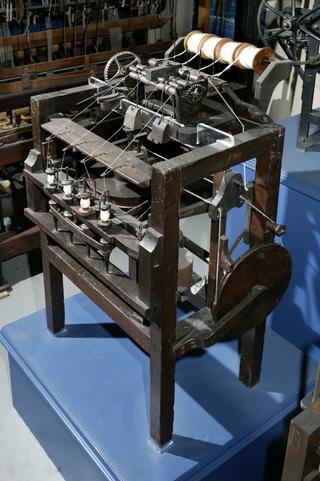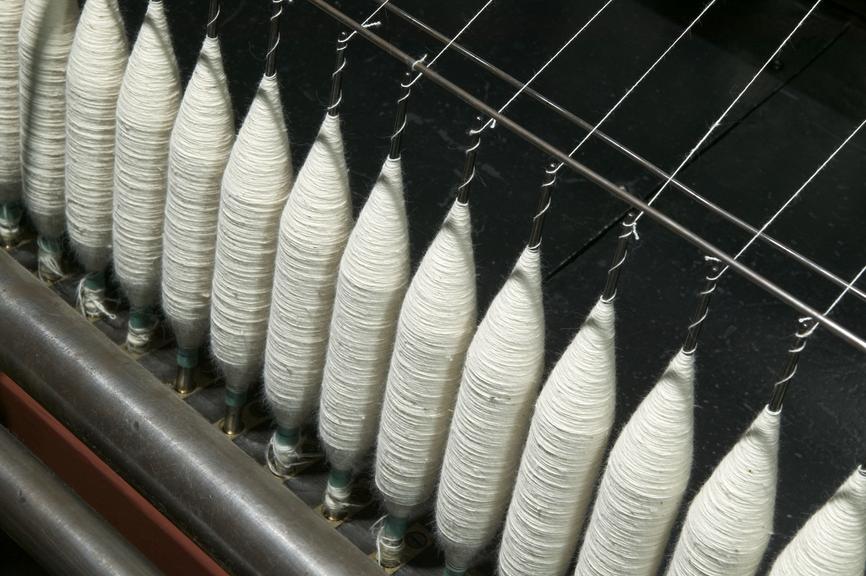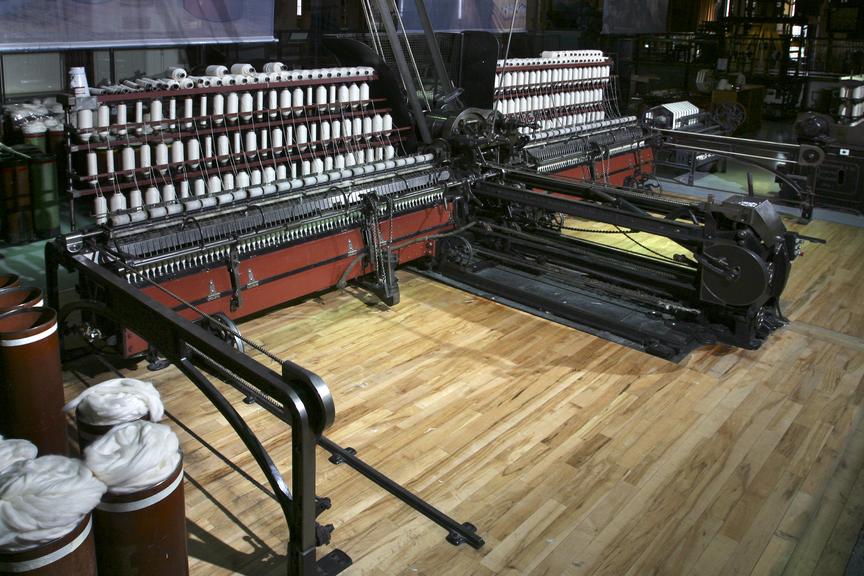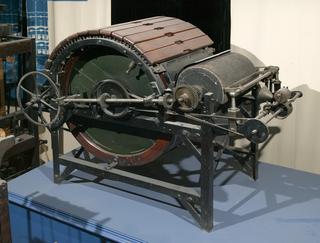
Spinning Mule






Self acting spinning mule, made by Platt Brothers & Co. Ltd, Oldham, 1927 and used at Elk Mill in Oldham until September 1974 when mule spinning operations there ceased.
The spinning mule spun stronger, finer yarn in greater quantities than had ever been possible. Invented by Samuel Crompton in 1779, it became the most common textile machine in Lancashire. Skilled workers operated spinning mules. They had to fix problems fast, so the machines did not break down.
Hot, humid and deafeningly noisy, in the spinning room machines twisted the cotton to make yarn. Dodging fast moving machines, children were forced to risk their safety to fix broken threads and sweep up. Laws passed in the 19th century banned very young children from working. By the time this mule was built in 1927, it had become illegal for anyone under 14 to be employed.
Details
- Category:
- Textile Industry
- Object Number:
- Y1974.61
- Materials:
- metal (unknown)
- Measurements:
-
overall: 3352 mm x 2134 mm x 7009 mm,
- type:
- spinning mule
- credit:
- Gift of Shiloh Spinners Ltd




